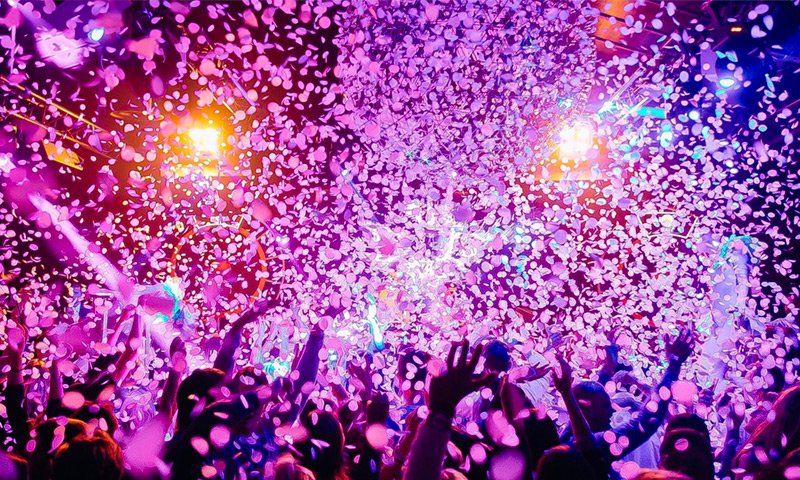Case Study: The Rise of Experiential Events

With so many events to choose from, customers and millennials are increasingly looking for something special that captivates their attention in a new way. This means event organizers stand to make big bucks if they know how to deliver an out of the ordinary event. To make sure you don’t miss out, we decided to investigate and collect some tips to create the perfect experiential event.
What is an experiential event?
Experiential events focus on creating a unique, interactive and immersive sensory experience for the ticket buyer. A night at the club or a dinner at a favorite restaurant don’t count, but a pop-up dinner with a secret location, or a themed night at an underground, invite-only rave would qualify.
But what is it about these events that make them so special and so increasingly popular?What exactly gives an experiential event its touch of magic, and has guests raving to their friends for weeks and even months afterwards? We’ve taken a look at some of the world’s most successful experiential events and dissected them from every angle in order to see just what makes them tick, and what makes customers willing to spend big bucks on them again and again.
Some Successful Experiential Events
Tough Mudder: a team building obstacle course
Tough Mudder took the concept of team building and challenging oneself to a whole new level. It’s core values are simple: challenge yourself, work as a team, and have fun. Over the course of a grueling 10 to 12 mile obstacle course, participants form teams to help each other crawl through mud, climb over walls and under fences, and push themselves to their limits.
Instead of competing against each other, Tough Mudders work together to make sure everyone completes the course. By putting this unusual twist on a traditional marathon, the courses have become popular for groups of friends and corporate events alike.
What Tough Mudder teaches us: People want to experience something together. The social and communal aspect of experiential events is very important.
Then She Fell: an interactive theater experience
First launched in 2012, Then She Fell is the latest New York has to offer in terms of interactive theater. With performances designed for just 15 guests at a time, Then She Fell reimagines the way theater is meant to be lived; instead of confining the audience to their seats and performing onstage, the team behind Then She Fell occupies an entire warehouse space and invites visitors to walk through rooms and explore hidden spaces in no particular order.
Their website describes the experience as “inspired by the life and writings of Lewis Carroll, it offers an Alice-like experience for audience members as they explore the rooms, often by themselves, in order to discover hidden scenes; encounter performers one-on-one; unearth clues that illuminate a shrouded history; use skeleton keys to gain access to guarded secrets; and imbibe elixirs custom designed by one of NYC’s foremost mixologists.”
Lessons from Then She Fell: Guests love having the freedom to explore, and feeling like they have control over their experience.
Diner en Blanc: an invite-only takeover of the public space
Diner en Blanc is one of the oldest experiential happenings around. Clocking in at 25 years old, Diner en Blanc has only grown in popularity as the decades have gone by, partly because of their strictly exclusive policies.
The concept is simple: would-be guests must know a member of the organization in order to be allowed to participate. Guests dress entirely in white and convene in a public location, where they set up an elaborate picnic. The results are ephemeral and otherworldly, transforming a normally mundane and public space into a fairy tale scene.
Diner en Blanc’s forte: Creating a sense of exclusivity, while staying firmly in the public space, capitalizes on guests’ desire to be in the know. Limiting access with guest-lists or releasing the venue directions at the last minute can build a huge hype around your event.
Pop-up Restaurants: a different way to eat out
Many famous chefs have started creating experiential dinners outside of their traditional restaurant settings. These dinners usually involve smaller numbers of guests, buying tickets ahead of time, and set menus.
Guests can also be seated at a single large table to create an intimate, un-restaurant-like setting. Chefs answer questions about the food preparation and specific menu items, and often mingle with guests in a more casual atmosphere. The trend has caught on all over the world, and even ordinary people who like to cook have started inviting others into their homes to enjoy a special night in good company: In Buenos Aires, closed door restaurants are everywhere, and cookapp lets people create a personalized dinner experience from their home.
What pop-up restaurants do right: Guests get a chance to speak with the chef and experience their meal differently. The atmosphere is also often cozier than a regular restaurant, and fosters a sense of a special occasion. Making your guests feel special and important will encourage them to recommend the experience and come back for more. Creating one-off events capitalizes on guests’ desires to be part of the experience while it is available and not be left out.
Final Thoughts
Guests are increasingly willing to pay more for a unique experience, and event organizers stand to profit if they can capitalize on that trend successfully. Take inspiration from successful experiential events like those which we briefly analyzed above, and don’t hesitate to get in touch with MyZone if you have any questions.







